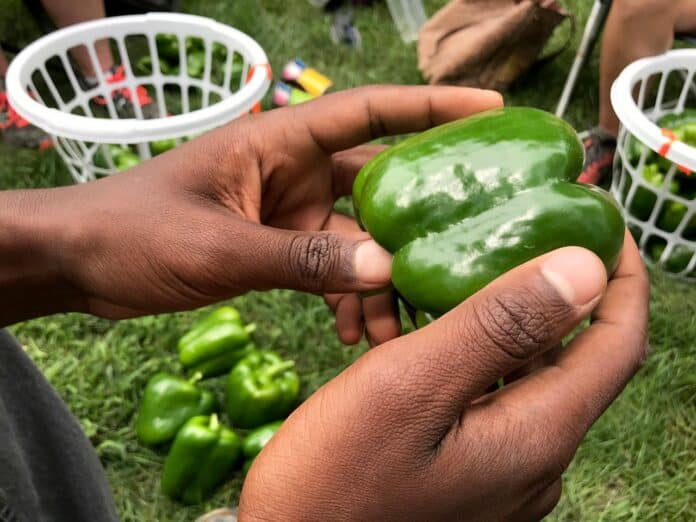Courtney Leisner wants to help plants fight pathogens better with rising global temperatures.
Funded by a multinational, multi-organization grant, Leisner will seek to better understand how pepper plants respond when simultaneously infected with the pathogen Xanthomonas and experiencing extreme heat. Working alongside Neha Potnis, associate professor of bacteriology at Auburn University, Leisner believes this can lead to more climate and disease tolerant crop varieties.
“The impact of this research will easily translate to other plants, especially other solanaceous species, which includes tomato, potato, and tobacco,” said Leisner, assistant professor in the School of Plant and Environmental Sciences in the College of Agriculture and Life Sciences. “We can learn a lot about those basic interactions that I think would be broadly applicable to other plant pathogen interactions.”
According to Leisner, researchers have a good understanding of how the plant responds to external stressors, such as heat or drought, and internal ones, such as bacteria, but there is little known about how they respond to both at the same time. Researchers will evaluate the molecular reactions to the temperature and pathogen stressors and translate that into developing crops with more real-world resilience.
“We know much less about plant responses to combined stress, which is much more realistic to what a plant would experience,” said Leisner, who is an affiliate with the Fralin Life Sciences Institute’s Translational Plant Sciences Center. “Oftentimes, what we find is that the knowledge we have from the individual stresses does not necessarily help predict the response we see in the combined stress. It’s not necessarily an additive effect, but it could be a synergistic or unpredicted outcome.”


Leisner and Potnis will be joined by Professor Gail Preston of the University of Oxford in England and Professor Thomas Lahaye of the Eberhard-Karls University of Tuebingen in Germany on the three-year project.
The work is supported by $2.4 million of funding across three agencies, of which Potnis and Leisner’s portion is $800,000 from the National Science Foundation. Preston’s funding comes from the UK Research and Innovation Biotechnology and Biological Sciences Research Council and Lahaye’s from a German research foundation, the Deutsche Forschungsgemeinschaft.
“This is actually a unique grant because the initial funding call was for a tri-national grant opportunity that was specific to the United States, Germany, and the United Kingdom,” said Leisner, an affiliate with the Global Change Center. “The lead country was the United Kingdom, and they were very interested in basic and applied research in model species as well as in agriculture.”
Leisner and Potnis have previously published three papers together on understanding plant responses to combined stress, including understanding how pepper plants respond to infection with Xanthomonas and simultaneous exposure to elevated ozone levels. The pair have not worked with their colleagues abroad, but they have partnered to collectively expand their research in plant responses to stress and disease.
Also called bacterial spot, Xanthomonas, is known to infect nearly 400 plant species that includes rice, citrus, cabbage, pepper, tomatoes, and beans according to Leisner. Because there is no known cure for this pathogen, it can wipe out entire yields.
For this project, bell pepper plants will be field grown in Alabama where Potnis will study the environmental factors that influence the pathogen dynamics in the plant, and Leisner will assess the physical, chemical, and biological changes from heat stress.
In Europe, both researchers will use growth chambers, which allow for control of the growing environment. In the UK, Preston will look at how Xanthomonas responds to heat stress, and in Germany Lahaye will study the response of the plant’s resistance genes to both the heat stress and to the pathogen.
“Understanding the molecular basis of how temperature affects pathogen virulence, and the functionality of plant immunity should, in the long term, enable us to engineer crops with thermotolerant pest resistance,” the researchers wrote in their grant application.
By Felicia Spencer


